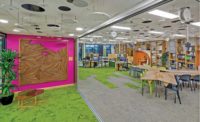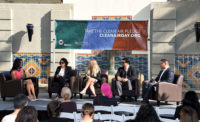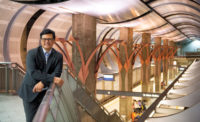...Support Facilities project for the U.S. Dept. of Energy’s National Renewable Energy Laboratory in Golden, which will open in June as the largest net-zero-energy building in the country.
But RNL wants to do more and has developed its own sustainable design framework, Design for One Earth, which pushes evaluation of energy, water, waste, carbon and nature’s efficiencies, says Tom Hootman, senior associate and director of sustainability.
“As an industry, we are just starting to grasp the tremendous potential for biomimicry, but it has a future,” Hootman says. Because it is so abstract, biomimicry will likely be designer-driven and should lead us to be thinking on bigger scales and a systems level,” he says.
Gardzelewski agrees that one of the shortcomings of the American approach to building green is that it isn’t very systematic.
“I think we don’t have an understanding of what we can build, so we’re still doing minimum requirements for structural add-ons instead of looking at systems,” he says.
More “environmentally responsive and organic designs” have been coming out of Europe for the last 20 years, Gardzelewski says, primarily because of government incentives, the high cost of energy and a more progressive architectural view of systems, rather than simply viewing them as structures.
He adds that just because one considers natural solutions, modern technology shouldn’t be discredited. “You may look at a bird wing to design a plane, but you won’t find a combustion engine in nature,” he says. “We must merge both.”
Jay Yowell, a University of Oklahoma architecture instructor, spoke at the National AIA convention in 2007 on biomimicry and architecture and recently to the AIA Denver Chapter’s Committee on the Environment. He says the “gee-whiz” factor has been driving biomimicry thus far, but credibility increases with knowledge, understanding and a growing number of applications.
Yowell is researching how building skins can operate like skins found in nature, but he says applying concepts is challenging. “Most clients, when you start talking about biomimicry, look at you funny,” he adds.
One approach to handling practical application is working with product manufacturers, Yowell says. The other is figuring out how to use a common, acceptable material and apply it differently.
“Oak bark, for example, has a pattern that runs vertically, but we usually run brick horizontally,” Yowell says. “Now our brick is basically wallpaper on most buildings, so perhaps if you turned it vertically, you could have a rainwater collection system or grout that lasts much longer. Little shifts like that are where biomimicry is really going to take off.”






